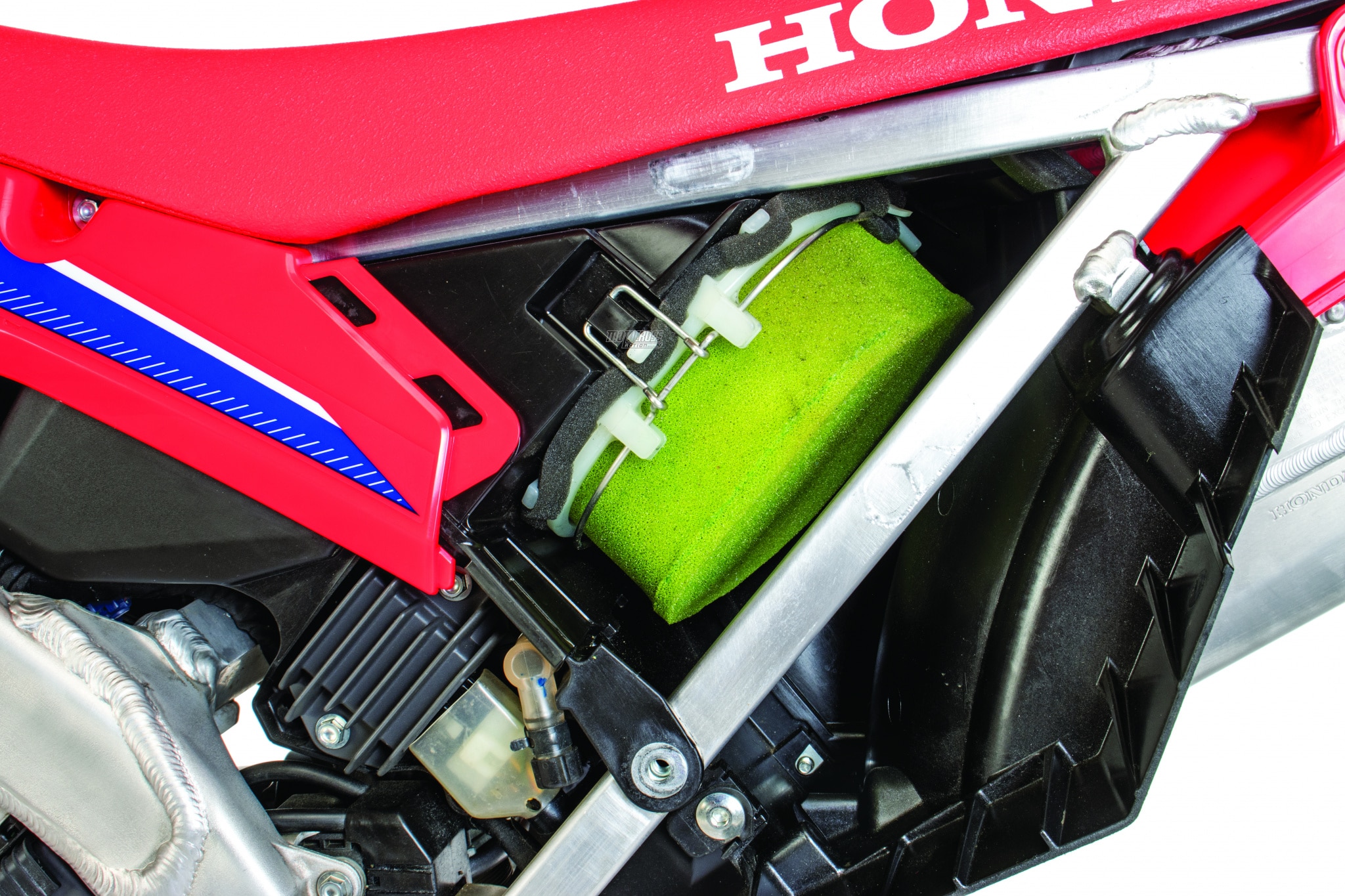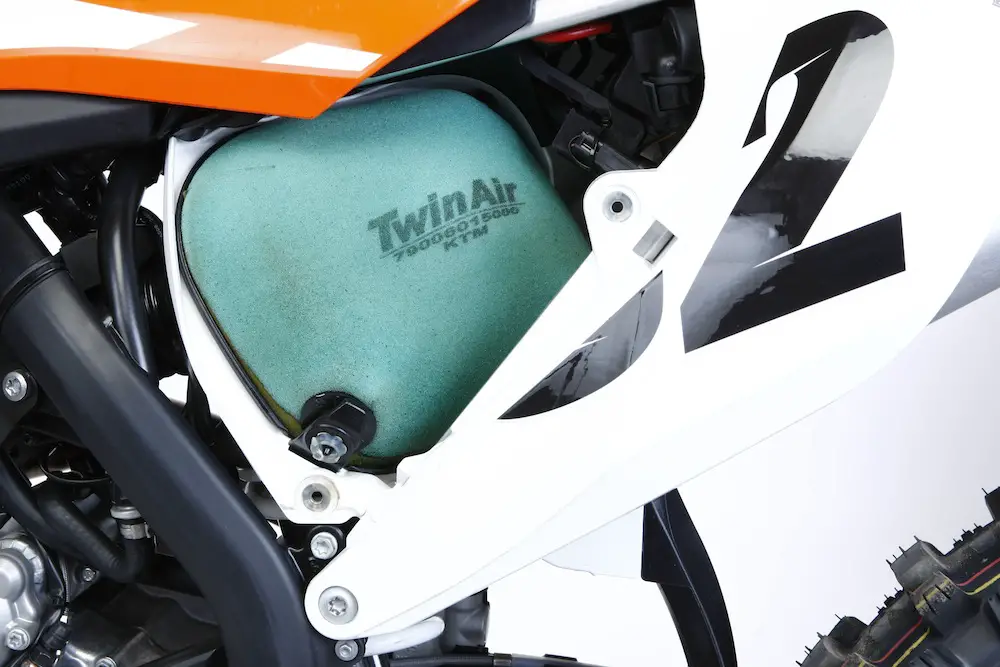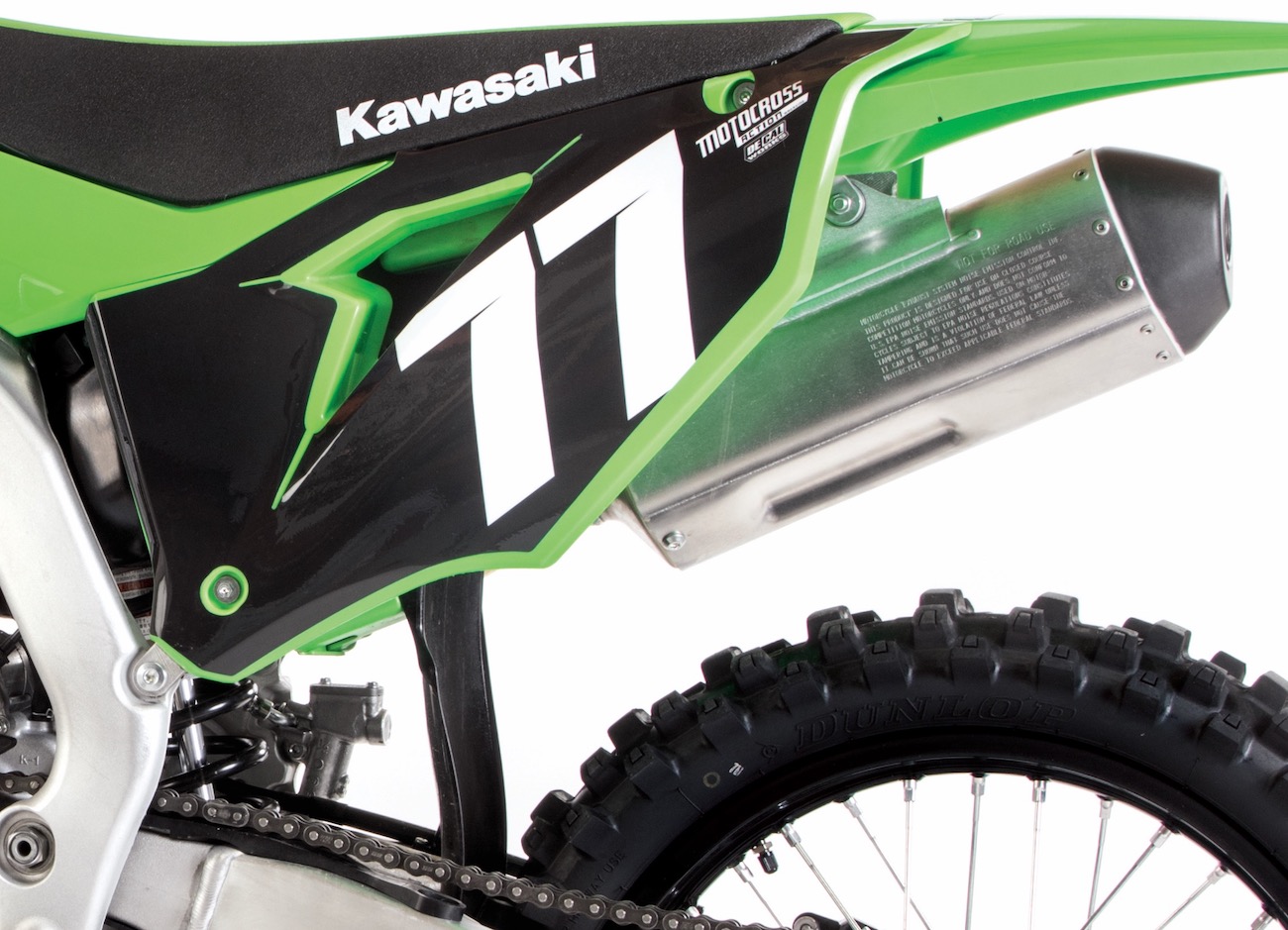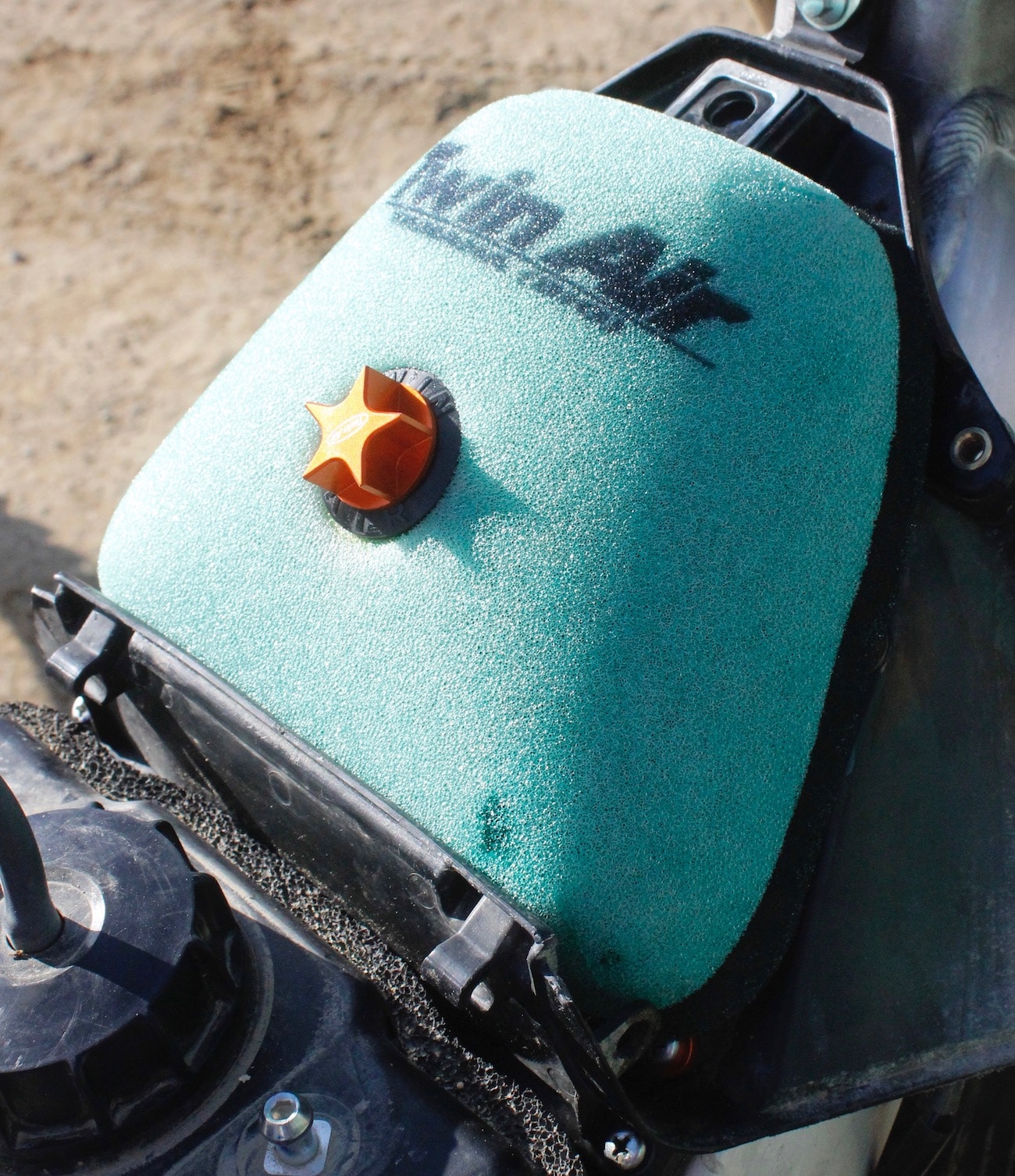TEN THINGS ABOUT MOTORCYCLE AIRBOX PHILOSOPHIES
 The upside down 2021-2022 Honda CRF450 air filter guarantees that no dirt can fall down into your engine.
The upside down 2021-2022 Honda CRF450 air filter guarantees that no dirt can fall down into your engine.
(1) Engines. Internal combustion engines use the expansion of compressed air with the help of fuel and spark to generate power. Thus, air is just as essential to your motorcycle as fuel. When airflow into the engine is restricted, horsepower suffers. Likewise, the more air an engine can process, the more power it can make. Air boxes aren’t negligible pieces of the puzzle; they play a significant role.
(2) Airbox covers. Coming in all shapes and sizes, some airbox covers allow for increased airflow, which boosts power and frees up the engine, while others restrict flow and tame the power. Although, you must remember that more power isn’t always better, especially in the 450 class.
(3) Honda. The 2021 Honda CRF450 has a new air box with significantly larger air volume, going up from 1.8 liters to 4.1 liters. With the new air box comes an upside-down air filter and a unique exterior filter cage. Besides creating more volume, the upside-down air filter prevents dirt from falling into the air boot when changing the filter. Also, instead of being at the top of the side number plate, the 2021 model has unique ventilation holes at the bottom that are disguised as a handle.
(4) Side mounting. Of the current manufacturers, KTM was the first motocross to introduce a modern side-mounted airbox cover in 1998 (there were others in the 1970s). It was eventually adopted by Kawasaki in 2019 and Honda in 2021. The side-mount cover design allows for easier access to install and remove the air filter. As you probably know, the Austrian airbox covers don’t require tools, while the Honda CRF450 requires removal of one 8mm bolt and, amazingly, the Kawasaki requires removal of two different size bolts. It uses a 10mm as both a seat bolt and an airbox bolt and an additional 8mm airbox cover bolt. We think Kawasaki should have done it with one bolt or at the very least the same size hex head on both bolts. Additionally, the KX450’s incredibly small air box makes it difficult to get the filter lined up.
(5) Yamaha. Back in 2010, Yamaha turned the YZ450F cylinder around backwards and designed an all-new straight intake with a special airbox design in front of the gas tank. It has been redesigned several times in an attempt to increase both airbox volume and air flow. Many riders drill holes into the front of their Yamaha airbox cover to get more air in, but this allows roost to land directly on the filter. New for 2021, the YZ250F came with holes in the back of the airbox cover to help vent air out. These holes are invisible to the rider, but they do help the power a little; however, they are much louder for the rider.
(6) Aftermarket. Ventilated airbox covers and screen-less filter cages help airflow. Companies like Twin Air, Nihilo (above), Slater, CRM and Cycra make vented airbox covers for the Yamaha YZ450F and YZ250F models, and Twin Air makes its PowerFlow kit, which comes with a screen-less intake, domed filter cage and larger air filter. Additionally, the 2020–’21 KTM and Husqvarna four-stroke models come with optional perforated airbox covers straight from the factory.
(7) GasGas. It is accepted that the Husqvarna plastic subframe/airbox combo doesn’t breathe very well and that KTM and Husqvarna air boxes could be much larger. To fix this, starting in 2020, KTM shipped its bikes with optional vented covers, while Husky offered a vented airbox cover but with considerably less airflow than its orange brother. Now, for 2021, GasGas has joined the Austrian squad, and its air box is closed off—big time. Utilizing the same air box as the KTM, the airbox cover on the GasGas has a lip that further seals off the flow of air. By lessening the airflow, the GasGas engine, which is identical to the KTM engine, has different power characteristics and is less responsive than either the KTM or Husky.
(8) Homemade horsepower. Some brands have a screen on the filter cage or at the mouth of the intake called a “backfire screen.” It is there to stop the air filter from catching on fire when the engine backfires. The wire screen cuts down on airflow, and riders who want more power often remove the backfire screen. If you are worried about your air filter catching on fire, Twin Air makes flame-resistant air filters and DT-1 makes flame-resistant air-filter oil.
The most common way to make more power or, more accurately, better throttle response and added top-end power is to drill 1-1/4-inch holes in the airbox cover. Be sure to position the holes behind your air filter to protect it in wet or dusty conditions. On the GasGas, start by trimming off the inner lip of the airbox cover; if you aren’t satisfied, drill holes in the cover.
(9) KX250 vents. The 2017 KX250 air box had two large vents on either side of the air box. Then, in 2018 and 2019, one vent was blocked off from the inside (presumably to help pass AMA sound regulations). Conversely, for 2020 Kawasaki went back to the open vents on both sides of the air box. Now, the 2021 KX250 has upgraded to the KX450 bodywork, which has only one larger vent on the left side.
(10) Filters. The Austrian brands come stock with Twin Air filters, but the Japanese brands choose to install thick filters that hinder airflow. This takes away from all the engineering efforts that went into creating an efficient airbox and intake system. Switch out your stock filters for Twin Air.











Comments are closed.